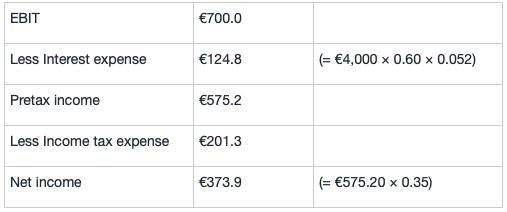NO.PZ201710200100000404
问题如下:
Elena Castovan is a junior analyst with Contralith Capital, a long-only equity investment manager. She has been asked to value three stocks on Contralith’s watch list: Portous, Inc. (PTU), SSX Financial (SSX), and Tantechi Ltd. (TTCI).
During their weekly meeting, Castovan and her supervisor, Ariana Beckworth, discuss characteristics of residual income (RI) models. Castovan tells Beckworth the following.
· Statement 1: The present value of the terminal value in RI models is often a larger portion of the total intrinsic value than it is in other DCF valuation models.
· Statement 2: The RI model’s use of accounting income assumes that the cost of debt capital is appropriately reflected by interest expense.
· Statement3: RI models cannot be readily applied to companies that do not have positive expected near-term free cash flows.
Beckworth asks Castovan why an RI model may be more appropriate for valuing PTU than the dividend discount model or a free cash flow model. Castovan tells Beckworth that, over her five-year forecast horizon, she expects PTU to perform the following actions.
· Reason 1: Pay dividends that are unpredictable
· Reason 2: Generate positive and fairly predictable free cash flows
· Reason 3: Report significant amounts of other comprehensive income
At the conclusion of their meeting, Beckworth asks Castovan to value SSX using RI models. Selected financial information on SSX is presented in Exhibit 1.

Castovan’s final assignment is to determine the intrinsic value of TTCI using both a singlestage and a multistage RI model. Selected data and assumptions for TTCI are presented in Exhibit 2.

For the multistage model, Castovan forecasts TTCI’s ROE to be higher than its long-term ROE for the first three years. Forecasted earnings per share and dividends per share for TTCI are presented in Exhibit 3. Starting in Year 4, Castovan forecasts TTCI’s ROE to revert to the constant long-term ROE of 12% annually. The terminal value is based on an assumption that residual income per share will be constant from Year 3 into perpetuity.

Beckworth questions Castovan’s assumption regarding the implied persistence factor used in the multistage RI valuation. She tells Castovan that she believes that a persistence factor of 0.10 is appropriate for TTCI.
4. Based on Exhibit 1, residual income for SSX is closest to:
选项:
A.
€40.9 million.
B.
€90.2 million.
C.
€133.9 million.
解释:
C is correct.
The residual income can be calculated using net income and the equity charge or using net operating profit after taxes (NOPAT) and the total capital charge. Residual income = Net income – Equity charge
Calculation of Net Income (values in millions):

Equity charge = Total assets × Equity weighting × Cost of equity
Equity charge = €4,000 million × 0.40 × 0.15 = €240 million
Therefore, residual income = €373.9 million – €240 million = €133.9 million.
Alternatively, residual income can be calculated from NOPAT as follows.
Residual income = NOPAT – Total capital charge
NOPAT = EBIT × (1 – Tax rate)
NOPAT = €700 million × (1 – 0.35) = €455 million
The total capital charge is as follows.
Equity charge = Total assets × Equity weighting × Cost of equity
= €4,000 million × 0.40 × 0.15
= €240 million
Debt charge = Total assets × Debt weighting × Pretax cost of debt × (1 – Tax rate)
= €4,000 million × 0.60 × 0.052(1 – 0.35)
= €81.1 million
Total capital charge = €240 million + €81.1 million
= €321.1 million
Therefore, residual income = €455 million – €321.1 million = €133.9 million
请问为什么不能用(ROE- Re)*B=(23.37%-15%)*48.8/2.1来计算RI?




